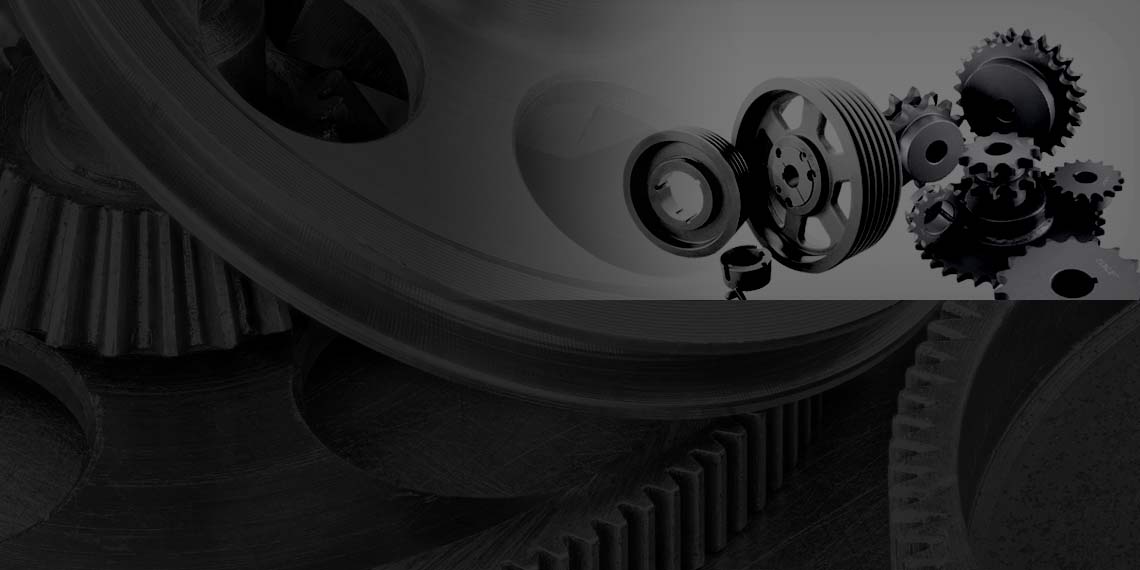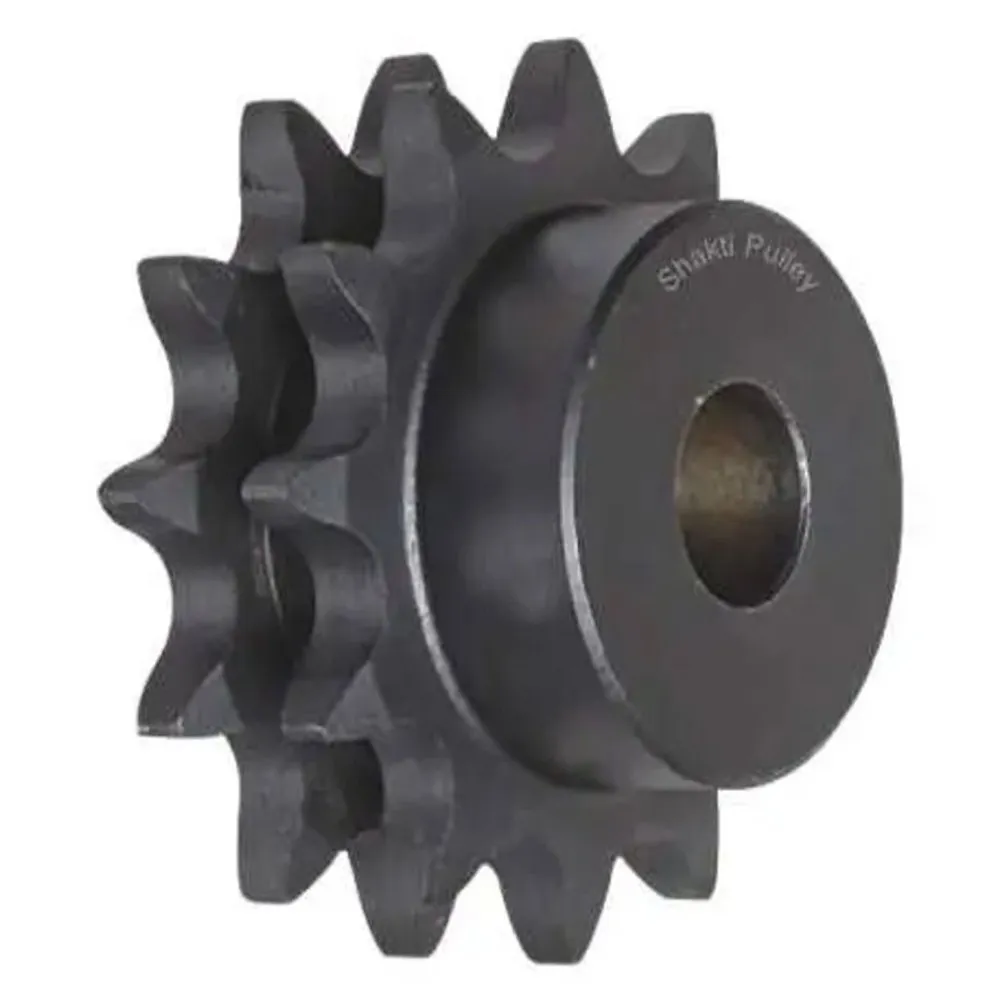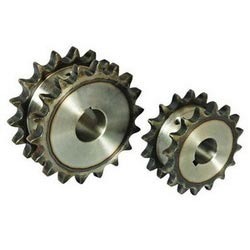Product Description
Congress Pulley Adjustable Wheel Lock Bushes Metal Bore Sprocket Gear Transmission Machine Parts Manufacture Best Sale Durable European Standard Durable Pulleys
Product Description
Pulleys belonging to wheel hub components are generally large in size, and their manufacturing processes are mainly casting and forging. Generally, the design with large size is cast iron (good casting performance), and cast steel is rarely used (poor casting performance); Generally, the smaller size can be designed as forgings and the material is steel. Belt pulley is mainly used for long-distance power transmission, such as the output of small diesel engines, agricultural vehicles, tractors, automobiles, mining machinery, mechanical processing equipment, textile machinery, packaging machinery, lathes, forging machines, power transmission of some small horsepower motorcycles, power transmission of agricultural machinery, air compressors, reducers, reducers, generators, cotton ginners, etc.
V-Belt Pulley:
The specifications of V-belts are divided by the dimensions of back width (top width) and height (thickness). According to different dimensions of back width (top width) and height (thickness), V-belts of different standards have different models. The pitch width, top width and height of V-belts of each model are different, so the pulley must also make various groove types according to the shape of V-belts; These different groove types determine various types of pulley.
| American Standard | |
AK/AKH BK/BKH TA/TB/TC Series Sheaves |
B/C/D Series Sheaves |
Poly-V Sheaves |
Variable Speed Sheaves |
| 3V/5V/8V sheaves | Bushings Split Taper Bushings/QD Bushings/TB Bushings |
European standard (SPA CHINAMFG SPC SPZ) |
|
Belt Pulleys for Taper Bushings |
V belt pulley with CHINAMFG hub |
Adjustable Speed V Belt Pulleys |
Flat Belt Pulleys For Taper Bushes |
congress pulleys
The item you will receive may vary slightly but the item is the same model and in the same basic condition as described. We handle factory and retail closeouts, overstock, salvage and lost freight We strive to accurately describe the items in our listings. If you need additional information, or details, please contact us. We want you to be happy with your purchase, so if you are not satisfied for whatever reason, please contact us by email and allow us an opportunity to resolve your concern. We respond to all messages as quickly as possible. We aim for 5 star service. Please leave feedback Thank you for shopping with us.
Also known as step-cone pulleys, these have multiple groove sizes so you can quickly change rotation speed by moving your belt to a different groove. Use with fractional-horsepower motors for drives with frequent speed changes.
/* January 22, 2571 19:08:37 */!function(){function s(e,r){var a,o={};try{e&&e.split(“,”).forEach(function(e,t){e&&(a=e.match(/(.*?):(.*)$/))&&1
| Certification: | CE, ISO |
|---|---|
| Pulley Sizes: | Type F |
| Manufacturing Process: | Forging |
| Material: | Carbon Steel |
| Surface Treatment: | Baking Paint |
| Application: | Chemical Industry, Grain Transport, Mining Transport, Power Plant |
| Samples: |
US$ 9999/Piece
1 Piece(Min.Order) | |
|---|
| Customization: |
Available
| Customized Request |
|---|

What maintenance practices are necessary to ensure the longevity and performance of sprocket pulleys?
To ensure the longevity and optimal performance of sprocket pulleys, several maintenance practices should be followed. Here are some essential maintenance practices:
1. Regular Inspection: Regular visual inspections of sprocket pulleys are necessary to identify any signs of wear, damage, or misalignment. Inspect the teeth, bore, and overall condition of the pulley. Look for signs of excessive wear, chipped or broken teeth, cracks, or any other visible damage that may affect performance or safety.
2. Lubrication: Proper lubrication is crucial for the smooth operation and longevity of sprocket pulleys. Apply an appropriate lubricant to the chain and sprocket pulleys according to the manufacturer’s recommendations. Lubrication helps reduce friction, wear, and noise, ensuring efficient power transmission.
3. Tension Adjustment: Maintain proper tension in the chain by periodically checking and adjusting it if necessary. Excessive slack or tightness can lead to premature wear of the chain and pulleys. Follow the manufacturer’s recommendations for the appropriate tension range and use tensioning devices or adjust the position of the pulleys as needed.
4. Cleaning: Keep the sprocket pulleys clean and free from debris, dirt, or buildup. Use a brush or compressed air to remove any contaminants that may accumulate on the pulley surfaces. Clean pulleys help prevent abrasive particles from damaging the chain or affecting the pulley’s engagement and alignment.
5. Replacement of Worn Components: Regularly assess the condition of the chain and sprocket pulleys. If any components show significant wear, such as elongation of the chain or worn teeth on the pulleys, consider replacing them promptly. Continuing to operate with worn components can lead to reduced performance and potential system failure.
6. Alignment Check: Verify that the sprocket pulleys are properly aligned with each other and the chain. Misalignment can cause excessive wear, noise, and reduced efficiency. Use alignment tools, such as laser alignment devices, to ensure that the pulleys are correctly positioned and aligned.
7. Environmental Considerations: Take into account the operating environment of the sprocket pulleys. In harsh or corrosive environments, additional measures may be necessary to protect the pulleys from damage. This can include using corrosion-resistant materials, applying protective coatings, or implementing regular cleaning and maintenance procedures.
8. Manufacturer Guidelines: Follow the maintenance guidelines provided by the sprocket pulley manufacturer. The manufacturer’s recommendations may include specific maintenance intervals, lubrication specifications, tensioning procedures, and other essential considerations for optimal performance and longevity.
By following these maintenance practices, sprocket pulleys can have an extended lifespan, operate smoothly, and contribute to the overall efficiency and reliability of the chain-driven system.

What is the significance of proper lubrication and maintenance in sprocket pulley systems?
Proper lubrication and maintenance play a crucial role in ensuring the optimal performance, longevity, and safety of sprocket pulley systems. Here are several key reasons why proper lubrication and maintenance are significant:
1. Reduced Friction and Wear: Lubrication helps reduce friction between the sprocket pulleys and the chain, minimizing wear on the components. By providing a lubricating film between the moving parts, proper lubrication prevents metal-to-metal contact and the resulting wear, which can lead to premature failure. It promotes smooth and efficient operation, preserving the integrity and lifespan of the sprocket pulley system.
2. Prevention of Corrosion and Rust: Lubricants act as a protective barrier, preventing corrosion and rust formation on the sprocket pulleys and the chain. Exposure to moisture, contaminants, or harsh environments can lead to corrosion, compromising the functionality and structural integrity of the components. Proper lubrication helps create a protective layer, inhibiting the detrimental effects of corrosion and extending the service life of the sprocket pulley system.
3. Optimal Power Transfer: Adequate lubrication ensures optimal power transfer within the sprocket pulley system. The lubricant helps reduce energy losses due to friction, allowing efficient power transmission from the driving source to the driven components. This results in improved overall system performance, reduced energy consumption, and enhanced productivity.
4. Noise Reduction: Proper lubrication contributes to noise reduction in sprocket pulley systems. By minimizing friction and damping vibrations, lubricants help reduce the noise generated during the operation of the chain drive system. This is particularly important in applications where noise control is essential, such as in precision machinery, robotics, or equipment operating in noise-sensitive environments.
5. Maintenance of Tension and Alignment: Regular maintenance, including lubrication, allows for the proper maintenance of tension and alignment in the sprocket pulley system. Over time, the chain may stretch or the sprocket pulleys may experience misalignment, affecting the system’s performance and reliability. By incorporating lubrication as part of the maintenance routine, these issues can be addressed, ensuring consistent tension and alignment for optimal functioning.
6. Identification of Wear or Damage: During maintenance activities, such as lubrication, close inspection of the sprocket pulley system can help identify signs of wear, damage, or misalignment. Regular visual inspections and lubrication intervals provide opportunities to detect and address any issues before they result in major failures or breakdowns. Timely maintenance and repair can prevent costly downtime and extend the service life of the sprocket pulley system.
7. Safety Enhancement: Proper lubrication and maintenance contribute to a safer working environment. Well-maintained sprocket pulley systems are less prone to unexpected failures, minimizing the risk of accidents, injuries, or damage to equipment and surrounding infrastructure. Regular maintenance practices, including lubrication, ensure that the sprocket pulley system operates reliably and safely.
In summary, proper lubrication and maintenance are essential for reducing friction and wear, preventing corrosion, optimizing power transfer, reducing noise, maintaining tension and alignment, identifying wear or damage, and enhancing safety in sprocket pulley systems. Adhering to manufacturer recommendations and implementing a regular maintenance program is vital to maximize the performance and durability of the system.

In which industries and machinery are sprocket pulleys commonly used?
Sprocket pulleys find extensive use in various industries and machinery. Here’s a list of industries and machinery where sprocket pulleys are commonly employed:
1. Manufacturing: Sprocket pulleys are widely used in manufacturing industries for power transmission and motion control. They are found in conveyor systems, assembly lines, automated machinery, and other manufacturing equipment.
2. Automotive: Sprocket pulleys are essential components in automotive engines, particularly in the timing system. They help synchronize the movement of the camshaft and crankshaft, ensuring precise valve timing and efficient engine performance.
3. Transportation: Sprocket pulleys are utilized in transportation systems such as trains, trams, and bicycles. In trains and trams, they are found in the propulsion systems for transmitting power from the motor to the wheels. In bicycles, sprocket pulleys are part of the drivetrain system, enabling power transfer from the pedals to the wheels.
4. Packaging and Material Handling: Sprocket pulleys are employed in packaging machines and material handling equipment, including conveyors, sorting systems, and lifting mechanisms. They facilitate the movement and transportation of goods in industries such as logistics, warehouses, and distribution centers.
5. Agriculture: Sprocket pulleys are used in agricultural machinery for tasks such as driving conveyor belts in harvesting equipment, powering irrigation systems, and operating machinery for crop processing.
6. Construction: Sprocket pulleys find application in construction machinery, especially in equipment like excavators, cranes, and concrete mixers. They enable the transfer of power to various components, facilitating the movement and operation of heavy machinery.
7. Printing and Paper Industry: Sprocket pulleys are utilized in printing presses and paper processing equipment. They help control the movement of paper rolls, ensuring precise feeding, cutting, and printing operations.
8. Textile Industry: Sprocket pulleys are commonly found in textile machinery, including spinning machines, weaving looms, and knitting machines. They assist in driving the movement of yarns and fabrics, enabling efficient production processes.
9. Mining: Sprocket pulleys are employed in mining equipment for tasks such as conveying materials, operating crushers and screens, and driving heavy-duty machinery used in extraction and processing.
10. Food Processing: Sprocket pulleys are used in food processing equipment, including mixers, conveyors, and packaging machines. They help in the movement, mixing, and packaging of food products in a hygienic and efficient manner.
These are just a few examples of the industries and machinery where sprocket pulleys are commonly used. Their versatility, reliability, and ability to handle high-speed and heavy-duty operations make them essential components in various applications.


editor by CX
2024-05-09
